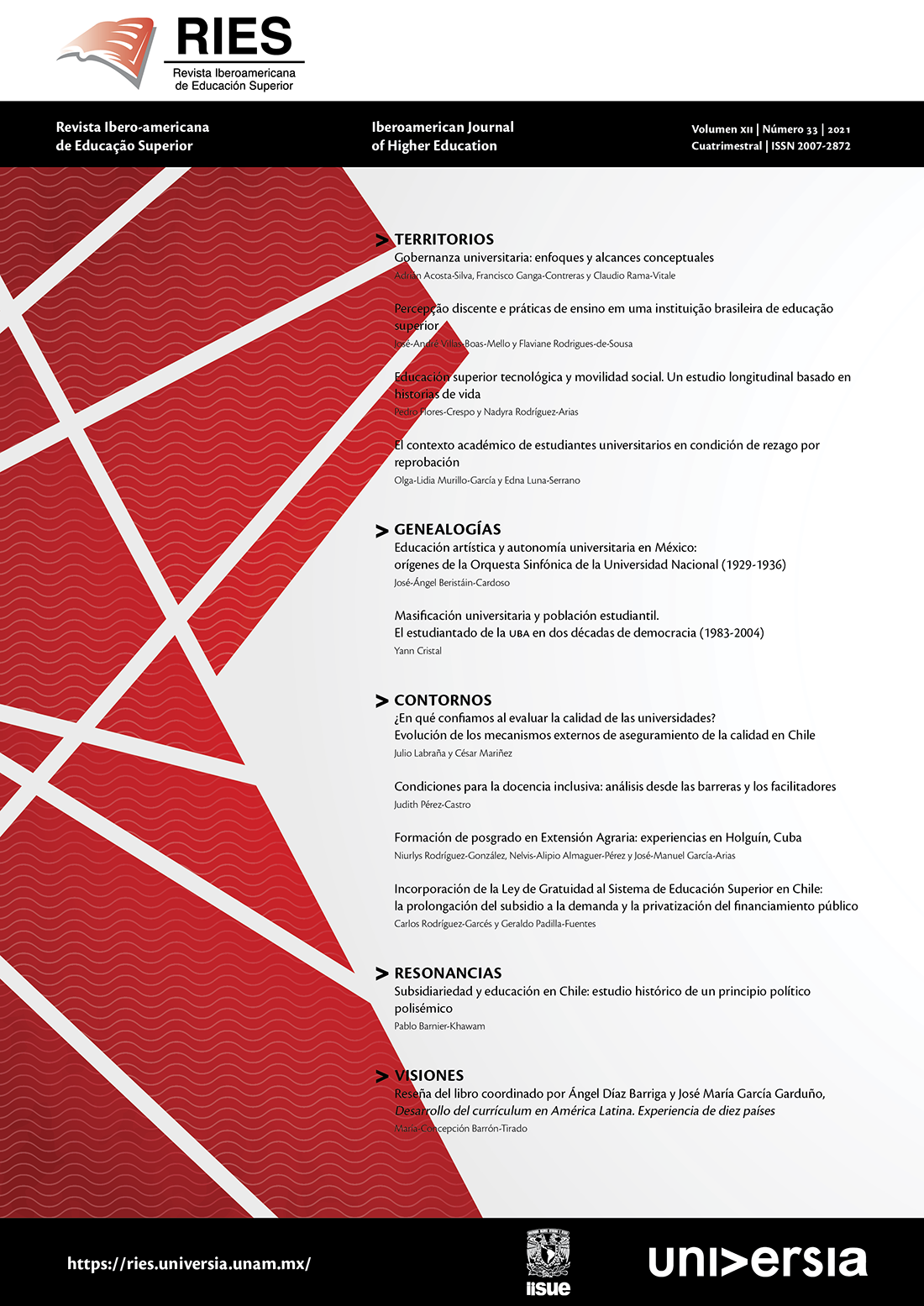Incorporación de la Ley de Gratuidad al Sistema de Educación Superior en Chile: la prolongación del subsidio a la demanda y la privatización del financiamiento público
DOI:
https://doi.org/10.22201/iisue.20072872e.2021.33.864Palabras clave:
educación superior, educación gratuita, financiamiento, privatización, política pública, ChileResumen
Utilizando datos oficiales, este artículo analiza los cambios que la nueva ley de Acceso Gratuito a la Educación Superior en Chile introdujo al financiamiento público, captación institucional y tasas de cobertura. Entre los resultados destaca la significativa inyección de recursos públicos pese al escaso nivel de cobertura alcanzado, una fuerte tendencia a su privatización y baja adhesión institucional. Con su implementación y gradualidad, esta ley acentúa la lógica del voucher, de acceso restringido y focalizado, mientras las instituciones, en un análisis de costo-beneficio, evalúan la captación de recursos y reducción de autonomía por regulación fiscal.


